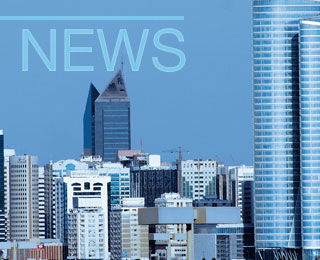This year has marked a broad-based recovery in the construction markets of the Gulf Cooperation Council (GCC) and the region appears to be returning to form, driven particularly by projects in Saudi Arabia and Qatar, as well as emerging signs of recovery in the UAE.
A recent report by Global Investment House (GIH) states that the turnaround seen in 2012 is expected to maintain momentum as it sees consumption climbing from 4-5 per cent this year to 6-7 per cent next year due to several major projects. "We expect the uptrend in demand to continue at least for the next four to five years, with further sizeable additions for high-ticket projects including the 2022 FIFA World Cup in Qatar and World Expo 2020, which is expected to be hosted by Dubai," the report said. Other associated legacy projects, for example the Dubai World Central Airport and the Metro expansion, will further support construction activity.
Saudi Arabia’s record spend
Saudi Arabia is leading the region in terms of housing and infrastructure and bumper 2012 oil revenue gains have fuelled a massive fiscal spending spree. For 2013, the government expenditure target is a record SAR820tn (US$219bn), up almost 20 per cent on the 2012 figure. One of the most ambitious projects is the construction of six new economic cities across the country, each requiring extensive infrastructure including housing, roads and bridges.
The domestic cement industry has registered exceptional growth with a remarkable CAGR of 20 per cent during 2005-11. According to data from NCB Capital, cement sales are expected to grow by 8.2 per cent YoY in 2013 to reach 56Mt and continue to grow at a CAGR of 6.3 per cent until 2015. In response to increasing demand, domestic cement capacity has risen from 31Mta in 2008 to the current 56Mta and is expected to increase to over 66Mta by 2015. Over 70 per cent of the market is held by the seven leading companies, but that may change as those in the western region ramp up capacity to supply a multitude of major infrastructure projects in the region.
UAE renewed growth
The emerging recovery underway in the UAE is particularly significant. The UAE is one of the Gulf's larger construction markets and the pipeline of projects is increasingly strong. Highlights in the current construction market include major transport infrastructure schemes such as Abu Dhabi’s Saadiyat Island, the recommencement of a number of stalled residential schemes and the start of work on major cultural projects previously cancelled in 2008. Dubai has also announced the establishment of “Mohammad Bin Rashid City”, with aims to boost the UAE economy and set new benchmarks in urban development in the region.
All this is good news for the domestic production base where competition has been fierce due to high levels of overcapacity. However, prospects for projects are increasingly strong and it appears the market is primed for further growth. The recovery may also be fuelled by a more sustainable approach compared to the pre-financial crisis outlook.
Qatar shortage looming?
Qatar has planned construction projects worth about US$140bn for the next five years to prepare for the 2022 World Cup and ensure that the country has the right infrastructure and competition venues to support an influx of visitors. Projects are currently focused on housing, hotels, 12 stadiums, a new port, roads, metro and rail system, malls and various other mixed-asset developments.
However, concerns have been raised that the country could soon face a cement shortage given the lack of any new major capacity additions in the pipeline to meet these growing requirements. Total integrated capacity from Qatar’s three producers stands at around 7.3Mta. The country’s dominant producer QNCC is studying the possibility of adding 5000-7500tpd of capacity while Qatari Investors Group recently revealed expansion plans for its cement subsidiary. GIH forecast that average cement demand over the 2013-15 period is expected to stand at around 5.5Mta, higher than the government estimate of 3.5-4Mta. With many mega-projects coming online thereafter, cement demand is slated to pick up further to 10Mta.
As confidence in the GCC region continues to grow the market is leading a recovery in the MENA area despite challenges persisting in some markets affected by the Arab Spring. It is clear, however, that this is an exciting time for the regional industry and expectations are these GCC countries will stay busy, well into the foreseeable future.
